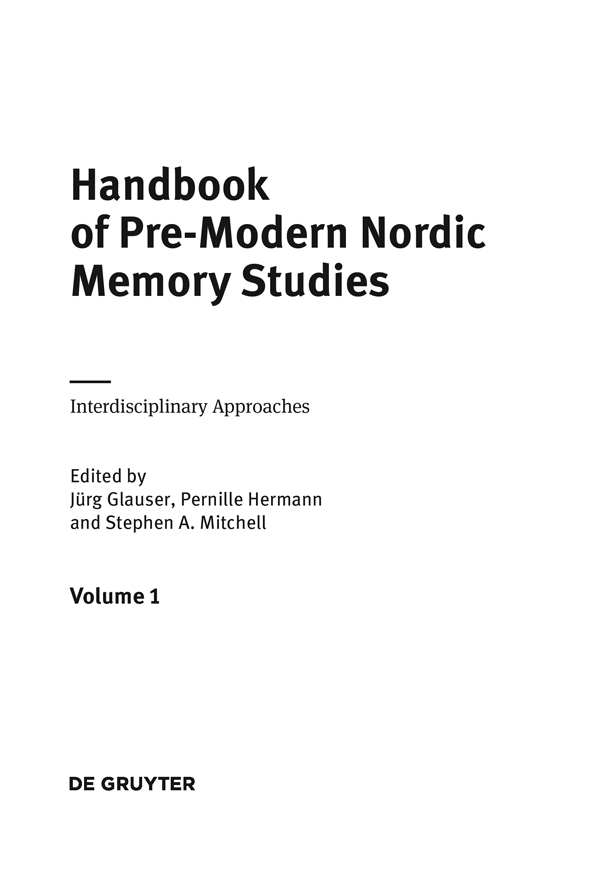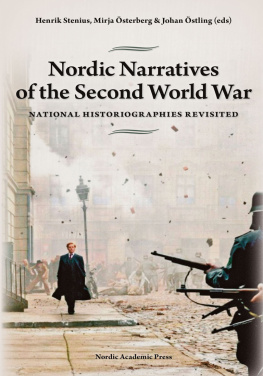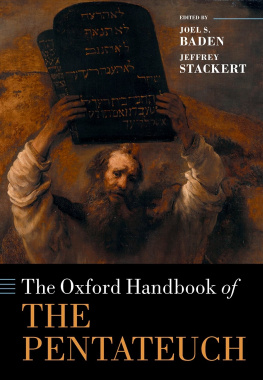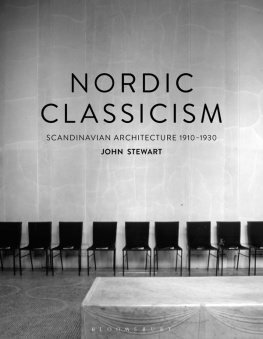Jrg Glauser - Handbook of Pre-Modern Nordic Memory Studies
Here you can read online Jrg Glauser - Handbook of Pre-Modern Nordic Memory Studies full text of the book (entire story) in english for free. Download pdf and epub, get meaning, cover and reviews about this ebook. year: 2018, publisher: De Gruyter, genre: Religion. Description of the work, (preface) as well as reviews are available. Best literature library LitArk.com created for fans of good reading and offers a wide selection of genres:
Romance novel
Science fiction
Adventure
Detective
Science
History
Home and family
Prose
Art
Politics
Computer
Non-fiction
Religion
Business
Children
Humor
Choose a favorite category and find really read worthwhile books. Enjoy immersion in the world of imagination, feel the emotions of the characters or learn something new for yourself, make an fascinating discovery.
- Book:Handbook of Pre-Modern Nordic Memory Studies
- Author:
- Publisher:De Gruyter
- Genre:
- Year:2018
- Rating:3 / 5
- Favourites:Add to favourites
- Your mark:
- 60
- 1
- 2
- 3
- 4
- 5
Handbook of Pre-Modern Nordic Memory Studies: summary, description and annotation
We offer to read an annotation, description, summary or preface (depends on what the author of the book "Handbook of Pre-Modern Nordic Memory Studies" wrote himself). If you haven't found the necessary information about the book — write in the comments, we will try to find it.
Handbook of Pre-Modern Nordic Memory Studies — read online for free the complete book (whole text) full work
Below is the text of the book, divided by pages. System saving the place of the last page read, allows you to conveniently read the book "Handbook of Pre-Modern Nordic Memory Studies" online for free, without having to search again every time where you left off. Put a bookmark, and you can go to the page where you finished reading at any time.
Font size:
Interval:
Bookmark:

Handbook
of Pre-Modern Nordic Memory Studies

ISBN 978-3-11-044020-1
e-ISBN (PDF) 978-3-11-043136-0
e-ISBN (EPUB) 978-3-11-043148-3
Library of Congress Control Number: 2018957732
Bibliographic information published by the Deutsche Nationalbibliothek
The Deutsche Nationalbibliothek lists this publication in the Deutsche Nationalbibliographie;
detailed bibliographic data are available on the internet at http://dnb.dnb.de
2018 Walter de Gruyter GmbH, Berlin/Boston
Cover image: The Hills of Old Uppsala in Sweden, Erik Dahlberg, Suecia Antiqua et Hodierna
Reproduction: National Library of Sweden
www.degruyter.com
Gurn Nordal
Memory is to most people an intensively private concept. We recognise the selectiveness of our own memory processes, when, for example, some stories from our past remain vivid in our minds, while others are easily forgotten. What are the cognitive processes which determine how we reconstruct our own remembered lives? Snapshots and home videos assist in the reconstruction of past events, even though details and names may be forgotten. Diaries are passed down in families, letters from the past come into the hands of descendants who know little of the initial context yet the written text lives on and takes on a new meaning in a different setting. Memory studies remind us that this constant reconstruction of the past is strongly affected by the collective memory of societies and groups. Our memory is conditioned by audiences and social settings, and by the technology of writing, and even by memory aids, factors that similarly condition our continuous reconstruction of the early history of the north through the centuries.
Memory studies is a relatively new field within medieval studies, and certainly within Old and Medieval Scandinavian Studies. Scholars examine the social, cultural, cognitive, political and technological shifts which affect how, what and why individuals, groups and societies remember, and forget. It is the study of the process of remembering over time, rather than what is remembered. Social, political and technological constraints affect the remembered. The study of the past is inherently preoccupied with memory, the way in which events, ideas and people are remembered, what is suppressed and then ultimately omitted from our records. Our idea of the past is always a representation of past events at any given time; however, cultural memory is not limited to language and written texts, preserved through the medium of manuscripts, runic inscriptions or wax tablets, but is also communicated through monuments, archaeological remains, artefacts, forms in the landscape and even the stars in the sky.
This new field eases into a scholarly space already occupied by other disciplines, but lends it a new and stimulating perspective. Memory studies have obvious and inextricable ties with folklore, oral, literary and historical studies, as we are reminded of in this handsome volume, and it is of interest and importance to highlight and explore the borderlines between the different disciplines oriented to the past. The study of folklore and orality takes into account the cultural context of the artistic performance, but memory studies are concerned with how the past is created individually and collectively and how it is used in the present. The study of history deals, however, with the past as something final.
Icelandic medieval literature is rich in size and content, but also of interest is how notably poor it is in theoretical works on rhetoric and memory, and therefore it is implicit and scattered references to rhetoric and memory in a variety of literary, learned and historical texts that must be studied carefully. Memoria artificialis , the theoretical-aesthetic of memory, and the practical-technical aspects of remembering are absent, but that does not mean that there are not ample sources for the student of memory. Neither category is represented in a systematic form in Old Norse texts, yet we have a number of remarkable texts which discuss theories of languages and literary representations, such as Snorra Edda , the prologues and the grammatical treatises, even though the emphasis is rather on poetic expressions, style and diction, than rhetoric.
Any writing system draws on memory, and stores information; so too does language and its semantic fields, rooted in a different social context but uttered afresh in new settings. Close readings of early texts challenge the literary scholar to draw up a semantic map of language over time. A skaldic stanza composed in the ninth century by a pagan poet and transmitted orally for four centuries, is given a fresh meaning when anchored in a prose text in the thirteenth century. The poetic utterance and the metaphoric language is then placed in a new and challenging setting in different manuscripts written from the medieval period well into the nineteenth century.
This book draws together a wealth of surveys and case studies by leading scholars in the field of Old and Medieval Scandinavian Studies. The writers in this book remind us time and again that memory is the vehicle for remembering, not what is remembered. It is a process from the individual to the collectively shared forms, to the carriers of memory as media: language, orality, writing, image, symbols, monuments and so on. The role of the non-textual is crucial in the construction of memories, even though it is more difficult to contain and evaluate. Some even contrast the media of the imaginary memory and that of the lifeworld.
The study of manuscripts is a case in point. A text is written down in a given context, and then its meaning changes with new audiences over time. The initial context is lost, though it may be implicit in a poetic expression and the way the words are transcribed on the leaf. The manuscript is furthermore an artefact in itself, an expression of economic wealth and political and social objectives, and the choice of text and how it is laid on the page gives us clues to the cultural context. The size of the manuscript, its binding, script, colouring and illuminations, all become part of the archive of the past. The manuscript exists over time and falls into hands of multiple generation of readers. We are always studying the past in the past, how humans in the past regarded their own past.
The breadth of this book is inspiring. The geography covers the area from Greenland east to the Baltics and to Russia, and south to Shetland, the Orkneys, the Hebrides, and Ireland, and the timeframe spans from the Viking period to the present day. The disciplines range from the study of early languages to the reception of medieval texts in modern film. I congratulate the editors, Jrg Glauser, Pernille Hermann and Stephen Mitchell, for their visionary undertaking. It is immensely helpful to put together such a wide-ranging handbook at this juncture, at a time when so much is still left to be done. The most compelling part of the handbook is its emphasis on new perspectives, questions, and problems which will inspire scholars and students to further this exciting field of study.
It is the aim of this volume as the title Handbook of Pre-Modern Nordic Memory Studies: Interdisciplinary Approaches suggests to scrutinise the ways in which memory, remembrance, commemoration, and other forms of anamnesis (at individual, collective, and cultural levels) mattered to pre-modern Nordic cultures and to examine how and in what forms these concepts of memory took shape. The articles in this volume reveal and confirm that this concern with memory, so dominant in the Viking and Middle Ages, has had implications that go far beyond the temporal and spatial frames of the pre-modern Scandinavian worlds, implications that extend deep into subsequent centuries, all the way to our own times.
Font size:
Interval:
Bookmark:
Similar books «Handbook of Pre-Modern Nordic Memory Studies»
Look at similar books to Handbook of Pre-Modern Nordic Memory Studies. We have selected literature similar in name and meaning in the hope of providing readers with more options to find new, interesting, not yet read works.
Discussion, reviews of the book Handbook of Pre-Modern Nordic Memory Studies and just readers' own opinions. Leave your comments, write what you think about the work, its meaning or the main characters. Specify what exactly you liked and what you didn't like, and why you think so.








